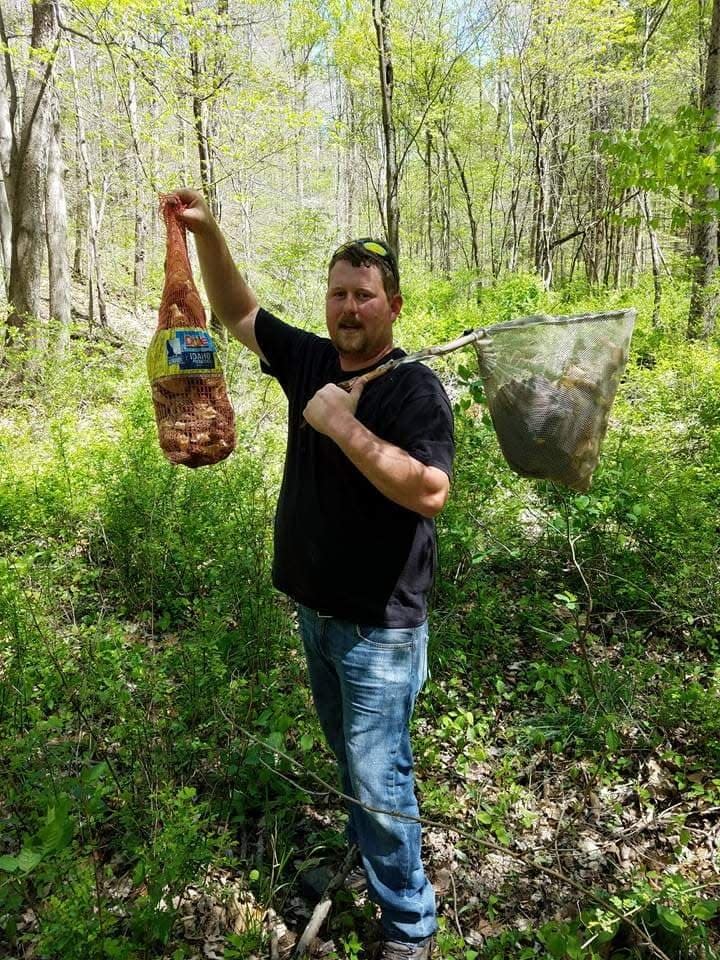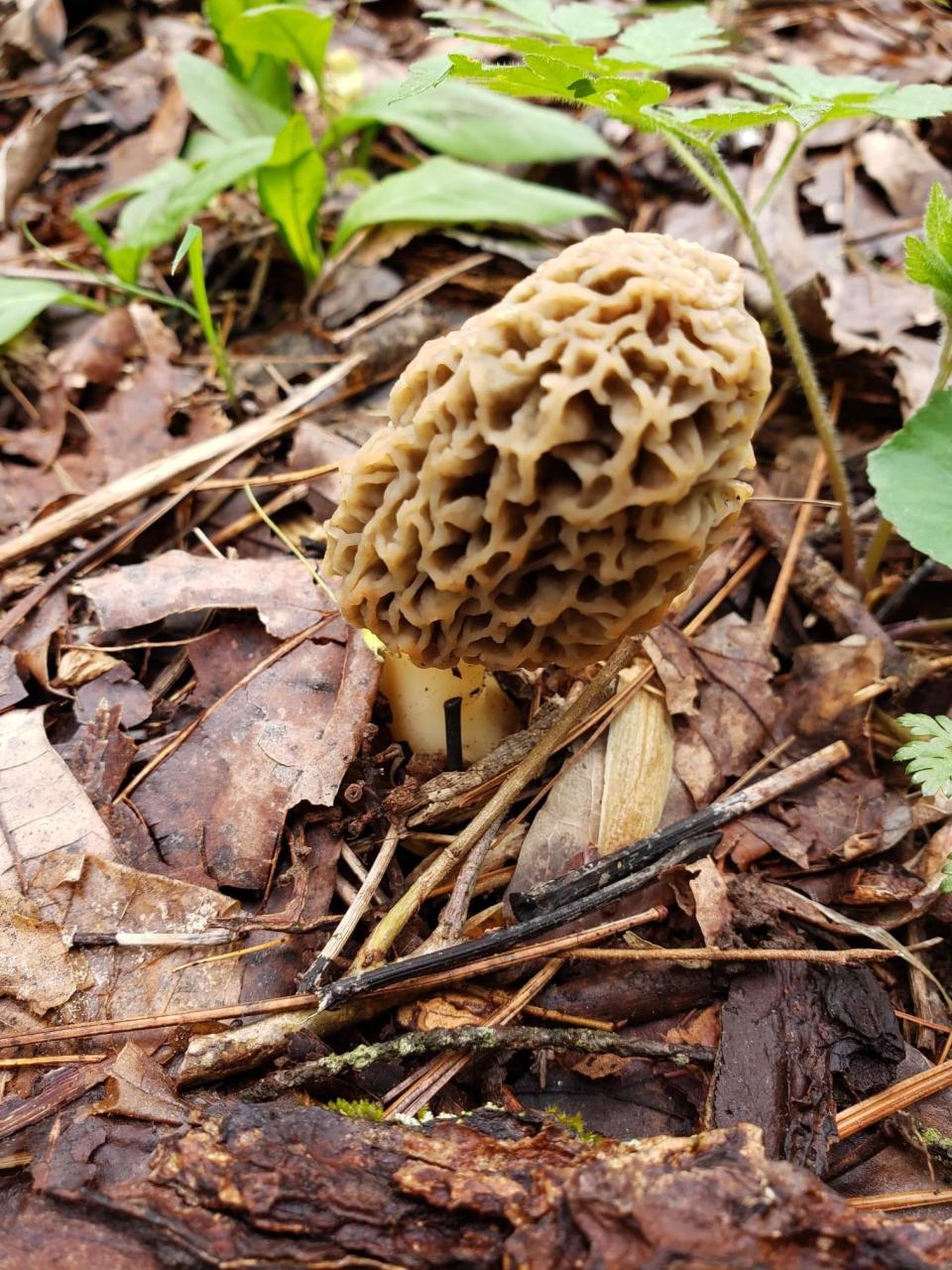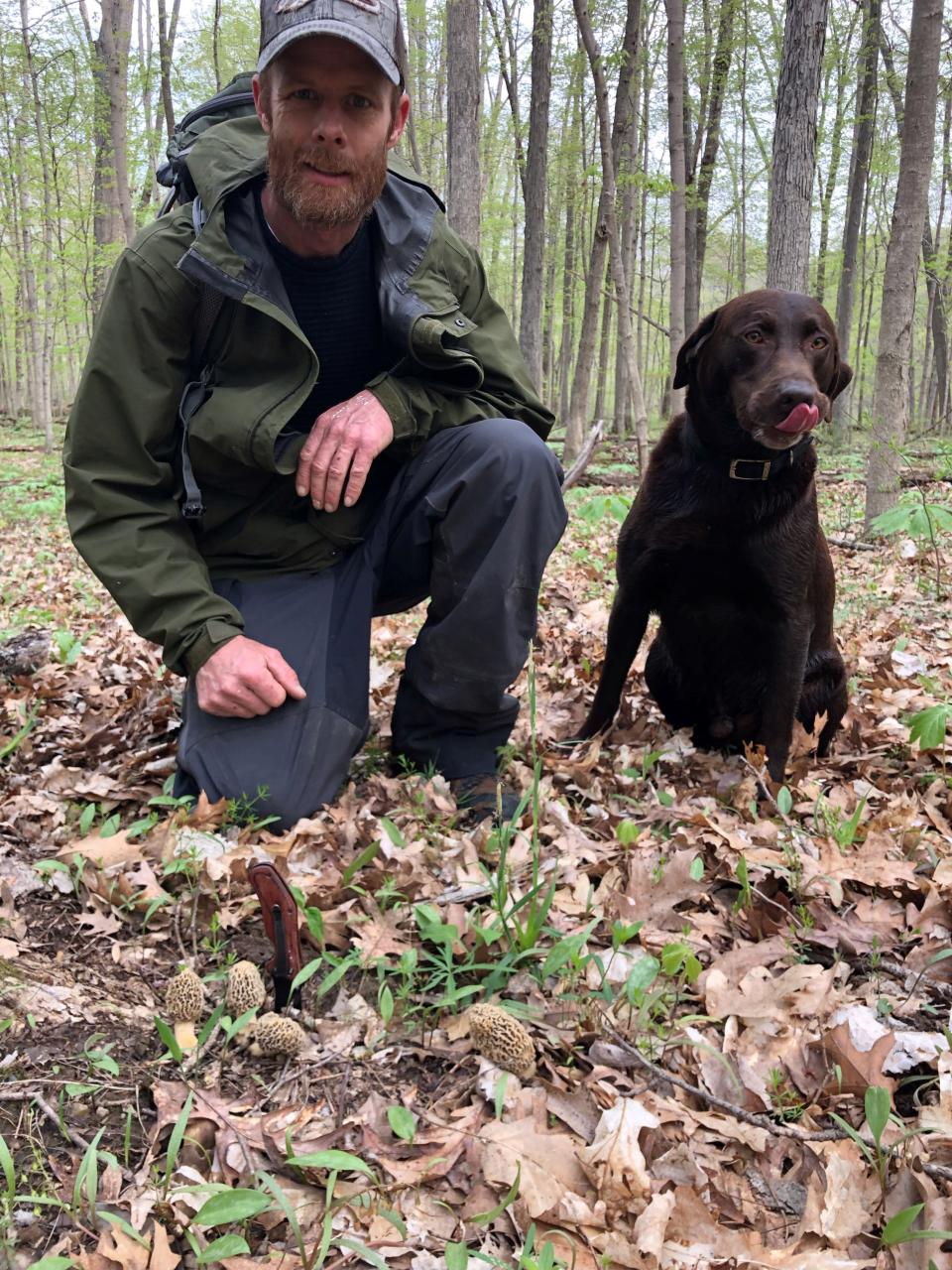2023 Morel mushroom season is underway in Indiana. What to know about the spring tradition
Editor's note: This story was originally published in 2022. We are republishing with 2023 info added as morel mushroom season begins around the state.
Dandelions and daffodils are in bloom, and mayapples are peeking through the fallen leaves, which can only mean one thing in Indiana:
It’s morel season.
An elusive springtime delicacy approaching revered status in Indiana, the mushrooms begin blooming in early to mid-April depending on where you are in the state.
But morel season is brief, lasting only about a month, and foragers eagerly watch for the first signs they should head out to look for the unmistakable mushrooms with porous, sponge-like caps and white, hollow stems.
Morel mushrooms: Here's what you need to know about morels and mushroom hunting

The flavorful fungi have Indiana’s mushroom hunters abuzz online. Foragers are posting photos of recent finds and updating county maps as the season creeps ever northward county by county.
The online communities, which include tens of thousands of members, can be a valuable tool for identifying mushrooms.
Finding a community
Anita and Andrew McCloud started a group on Facebook, Indiana Morel Mushroom Progression, to keep track of where and when the fungi start fruiting (or popping as some like to call it).
“Mushroom hunting as a whole is just good for the soul,” Andrew said. “It gets you out of the house when spring is flourishing and gets you kind of back in touch with yourself when you walk out in the woods and find a bag full of mushrooms.”

The couple has put together giveaways on the page, which has nearly 40,000 members. The first year the page was up they gave away a shirt, Anita said. Then they partnered with mushroom hunter and retailer Alex Babbage to give away a couple of tote bags. Most recently, the McClouds hosted a trash haul giveaway where morel foragers would post photos of themselves clearing trash out of the woods.
“You see a lot of trash along the way when mushroom hunting,” Anita said. “This was a way to get everyone involved picking up garbage when picking up mushrooms and the winners ended up being a woman and her kids.”
Morel: No, eating morel mushrooms won't make you susceptible to coronavirus
Anita said the page would not have grown without the help of friend Amber Wimmenauer and moderator Adam Maynard.
Open invitation for someone in Indiana to show me where and how they gather morels. I’ll carry the secret(s) to the grave if need be.
— Ben Bascom (@Ben_Bscm) April 7, 2023
Types of morel mushrooms in Indiana
There are four types of morels in Indiana.
The first to appear are black morels. These are a bit more fragile and harder to spot because of the coloring and the preferred habitat, said Doug Selby, who is a mushroom identification expert in the state.
Around the same time, or slightly after blacks start fruiting, half-frees or goosenecks, appear.
Then come the big spongy morels: Morchella americana. These are the classic morels you might imagine. Called white morels in the commercial industry, and sometimes referred to as yellow morels by enthusiasts, these are the main attraction.
Finally, there are “tulip” morels. They’re abundant but much smaller than the other species.

Facebook is flush with local groups for every niche community and interest, but the morel groups reach a fever pitch as the mushrooms start appearing.
John Sunderman, who started a different Facebook group, Indiana Morels, said the only rule in his group, which expert Selby helps run, is: Be kind.
Sunderman, who now lives outside Chicago but grew up and owns property near Huntington, used to forage for morels around three reservoirs in his old Indiana stomping grounds.
All three lakes used to be farmland but reverted back to forests and woodlands in the ‘60s. These decades-old woods are prime spots for morel hunting, Sunderman said. The best spots are areas that haven’t been touched by development in five decades or so.
“I was kind of blessed in that area,” Sunderman said.
On the hunt
When it comes to foraging for morels, it’s reminiscent of Goldilocks and the Three Bears.
It turns out morels are finicky: soil temps must be in the correct range (between 50-60 degrees), Sunderman said, and moisture levels can’t be too wet or too dry and the sunlight needs to be just right.
Mayapples are the clearest sign for Sunderman that the season has come.
Morel hunters can forage in most state parks and forests in Indiana, so long as the lands are not designated as preserves. The morel season also happens to coincide with spring turkey hunting, so 'shroomers are encouraged to wear hunter orange and wait until early afternoon during season to get out into the woods where permitted hunters are present.
Mushroom hunting: Indiana teen finds ‘ginormous’ morel mushroom
No trespassing: Illegal mushroom hunting is not a rare crime
Edible mushroom hunting, as well as berry foraging, is an exempt activity in the state, meaning it’s legal to go off hiking trails to search for morels.
The state does have some rules about commercially selling morels. Private sellers are free to do so, but anyone who wants to sell to restaurants must become a certified Mushroom Identification Expert, like Selby.
Steve Russell founded and operates The Hoosier Mushroom Society, which offers courses, so residents can comply with state laws. The courses culminate in a certificate that is accepted by the Indiana State Department of Health.
But not all Society students are there for the certification, Russell said; about half come just to learn. Nowadays, the course is online due to COVID-19 restrictions.
“Essentially, it’s an online Zoom meeting. People get course materials and review the identification of morels and the closest lookalikes found in the state,” Russell said. “We really get all walks of life. It’s a pretty good mix of all varieties of interest.”

The Society not only does morel identification but offers courses on edible mushrooms of other varieties as well. And all the funding helps the group’s core mission to identify every species of macro fungus occurring in Indiana. Mushroom gatherers who want to participate can send Russell and the society collections that are then cataloged.
Russell has a lab at his home to process the mushroom DNA, and he sends them out to private labs to have the DNA sequenced.
“We’re currently up to well over 2,000 species of mushrooms documented within the state with DNA,” he said. “It’s foundational knowledge that all future lines of scientific inquiry are dependent on.”
Morel hunters may come across other mushroom species that are not yet documented and the Society is happy to check them out.
“People have the potential to be the first to find a species within the state,” Russell said. “It’s not easy, but it’s definitely possible.”
Clearing up some mushroom myths
Selby remembers finding his first morel when he was 6-years-old and out with his parents and grandparents. As he got older, he enlisted the help of his brother to learn more about mushroom foraging and eventually went on to take Russell’s course.
Selby holds a wealth of knowledge from the scientific to the practical, and said there’s nothing like the look on someone’s face when he takes them out foraging and they see their first morel.
As a moderator on Indiana Morels, he’s learned to bring the right attitude when arguments erupt and finds the conversation is quickly calmed.
The morel community at large harbors some myths: net bags help spread spores or which trees provide the best spots.
From 2017: Where have all the morels gone?
First, Selby said morels don’t just drop spores while hunters carry them out of the woods. The mushrooms actually eject spores as soon as they start fruiting. Foragers do, however, carry spores on their feet and clothes as they’re walking through the forests, so mesh bags are just hand-me-down ideas from bygone eras.
“People used what they had back in the ‘50s and ’60,” Selby said. “Onion sacks, potato sacks, they used produce bags having no idea there were spores in the morels and no understanding this is how they reproduce.”
It is smart to use these netted bags or a basket when collecting, though, as it stops the morels from getting mushy, Selby said.

His best advice for beginners, he said, is to buy books on morel foraging and tree identification. It’s especially important to be able to ID trees by the bark since the leaves are often too small or only buds during morel season. The best way to learn which trees are which is time spent in the woods.
“Morel hunting is a wonderful thing,” Selby said. “The most exciting thing is it’s the sign of life coming back. After the long, quiet resting period and the gray, dark days and cold weather where it feels like everything is dead, I love getting out and seeing all that potential energy just bust back to life.”
So what’s the fuss?
Andrew McCloud said the ultimate prize is having a plate and being able to share with neighbors and family members who can’t get out and forage themselves.
“It’s a good way to bond with family and get into the woods and touch with nature, too,” McCloud said.
Plus, morels are tasty.
“Morels just taste so good and flavorful,” McCloud said. “You can prepare them in a variety of ways.”
A common method is to pan fry the morels in oil or butter with some seasoning. McCloud said he likes to batter the mushrooms, flash fry and then freeze them. This way, he gets to enjoy a nice plate of morels whenever he wants.
Sunderman said some people flour and then fry them or even put them on pizzas. Both Facebook groups have a plethora of recipe ideas as everyone’s taste is a bit different.
But whatever you fancy, from deep-fried and butter-filled to pan-seared and breaded, morels bring people together online, in the woods and at the dinner table.
“It’s never a bad day," Selby said, "to go out and look for a mushroom.”
2023 Indiana morel mushroom map
There are numerous websites devoted to tracking and finding morel mushrooms, but few are as detailed as the one at TheGreatMorel.com. Check it out here.
It’s almost that magical time again here in Indiana. I think maybe another week and they will be popping good #morel #fungi #forage #foraging #howto #spring #springtreats pic.twitter.com/k5jIQEU1nS
— Chris Isaacs (@wildisaacs) March 25, 2023
2023 morel mushroom price
While reports of the 2023 price for morel mushrooms vary considerably early in the season, one online retailer is selling them as a preorder for $82.55 per pound.
The actual price locally will largely depend on how the season turns out, the types of morels found, and the demand.
Karl Schneider is an IndyStar environment reporter. You can reach him at karl.schneider@indystar.com. Follow him on Twitter @karlstartswithk
IndyStar's environmental reporting project is made possible through the generous support of the nonprofit Nina Mason Pulliam Charitable Trust.
This article originally appeared on Indianapolis Star: 2023 Morel mushroom foraging: Your guide to hunting in Indiana

